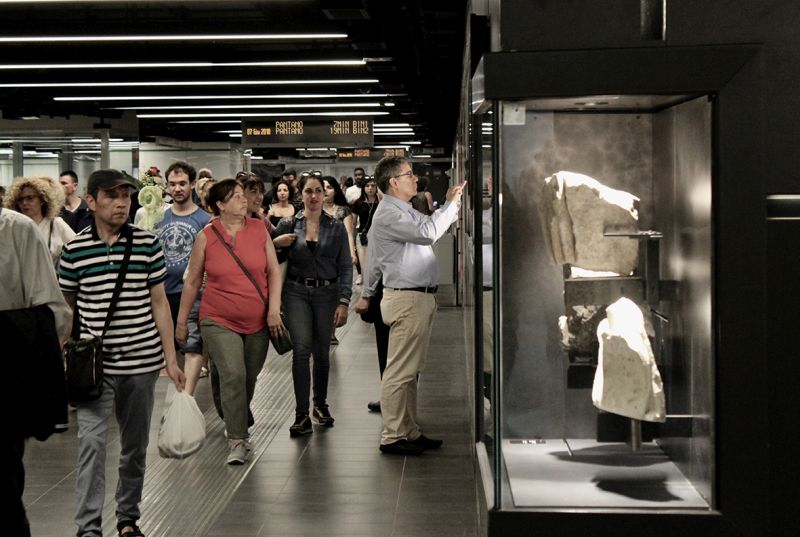Fig.
1 - Athens Metro, Acropolis Station. Photo by Author.
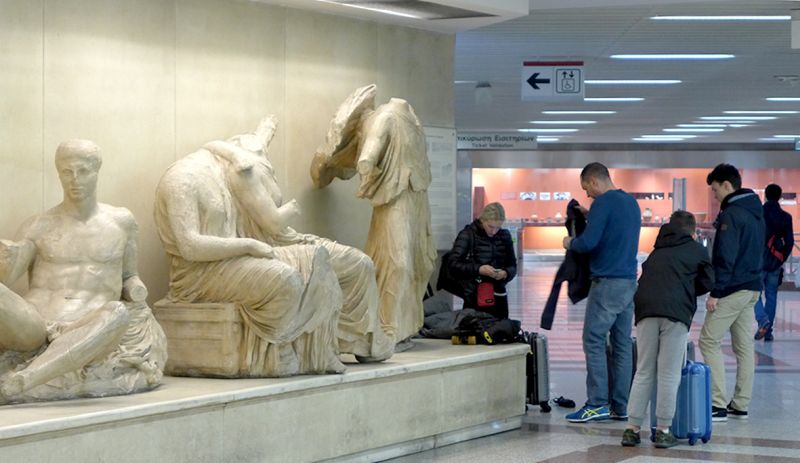
Fig.
2 - Sofia Metro. Arrangement of the findings of the Roman city. Photo
by Author.
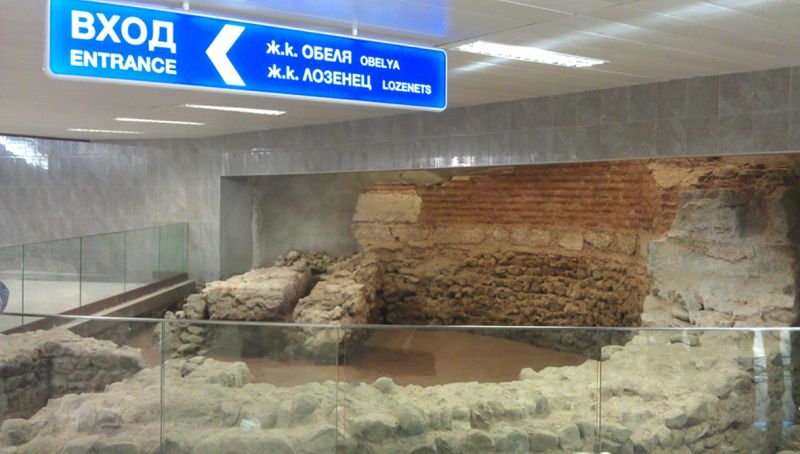
Fig.
3 - Rome Metro, excavations of line B at Termini; domus
found they will be demolished and the frescoes removed. Archive
Photographic Archaeological Superintendence of Rome.
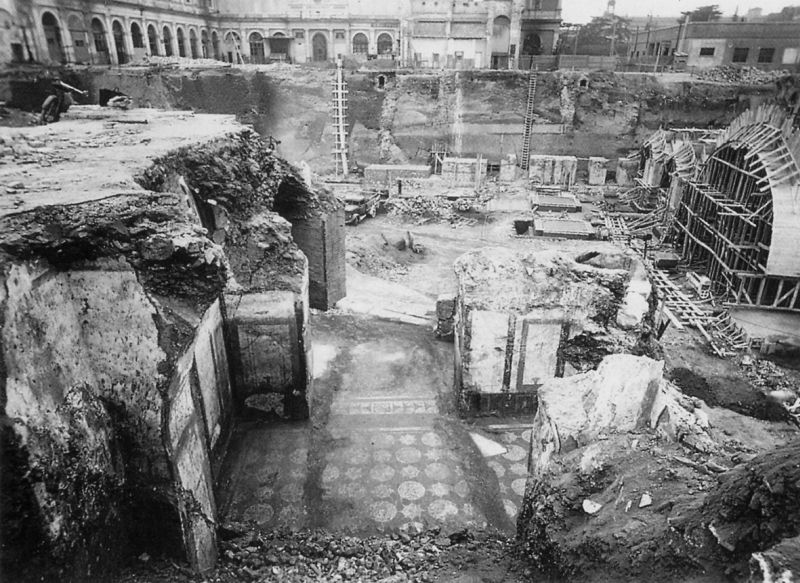
Fig.
4 - Naples Metro, Municipio Station, rendering of the
arrangement of archaeological finds according to the Siza-Souto de
Moura project.
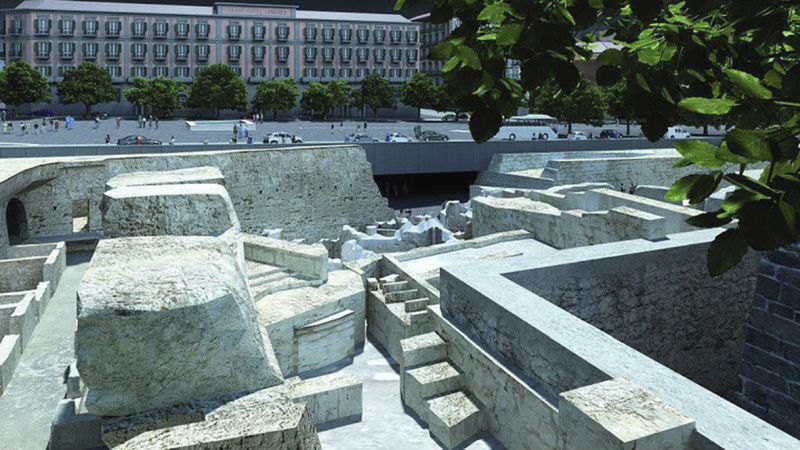
Fig.
5 - Author & C. Rome Metro, Line C, San Giovanni Station.
Conceptual section of the story of the stratification.
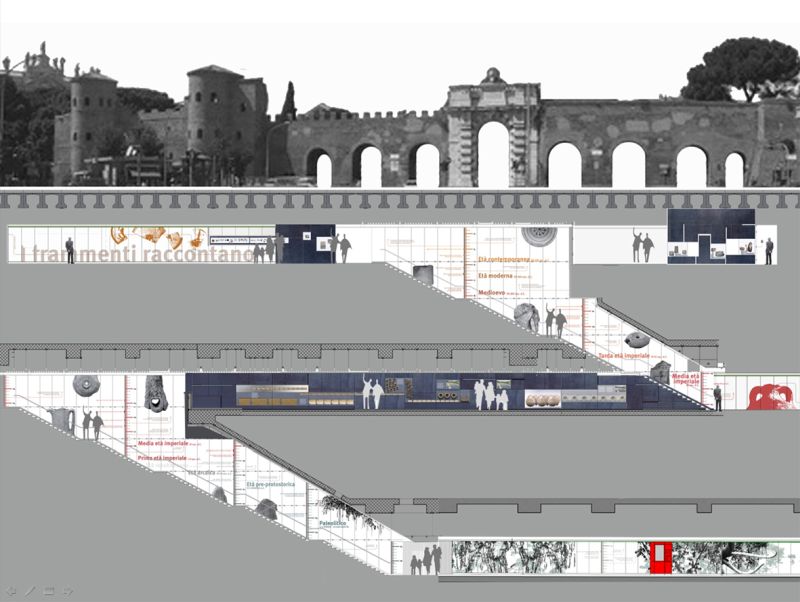
Fig.
6 - Author & C. Rome Metro, Line C, San Giovanni Station.
Atrium set up.
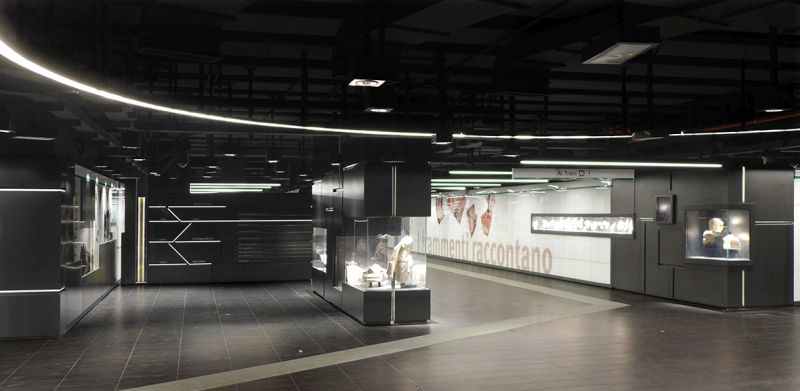
Fig.
7 - Author & C. Rome Metro, Line C, San Giovanni Station.
Preparation of archaeological finds.
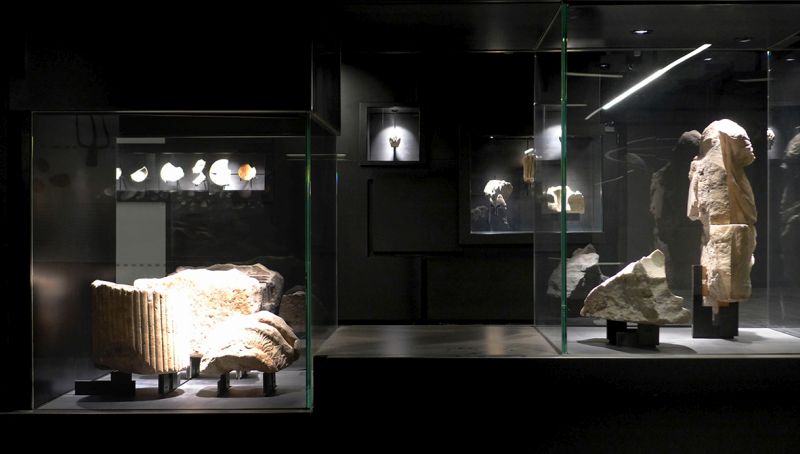
Fig.
8 - Author & C. Rome Metro, Line C, San Giovanni Station.
The narration becomes preparation.
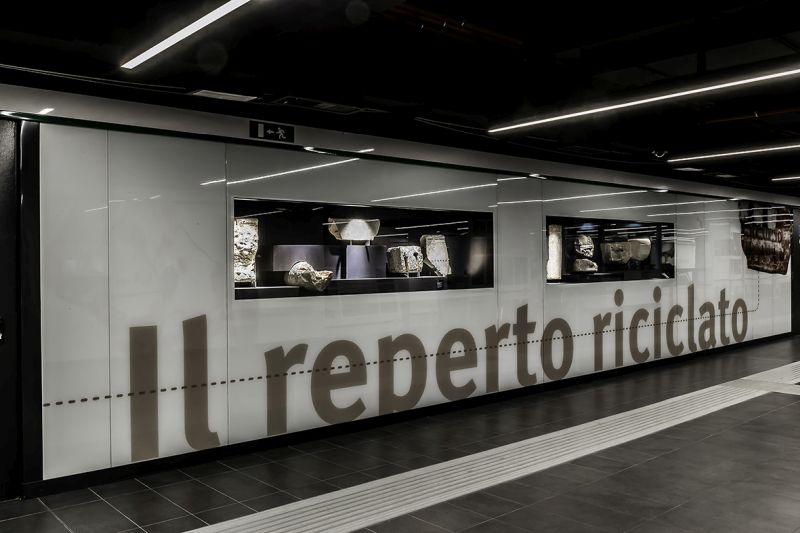
Fig.
9 - Author & C. Rome Metro, Line C, San Giovanni Station.
The stratimeter and the story in images.
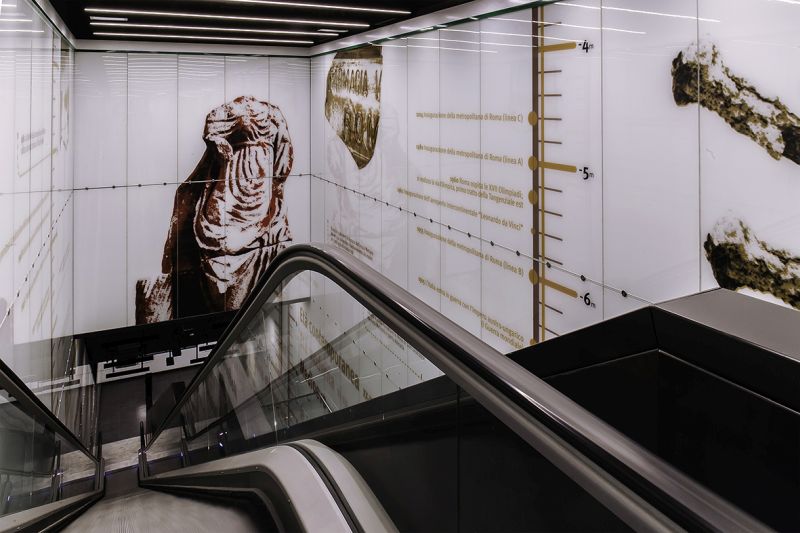
Fig.
10 - Author & C. Rome Metro, Line C, San Giovanni Station.
Installation of the hydraulic works of the imperial agefound by
excavations at the depth corresponding to the
plan.
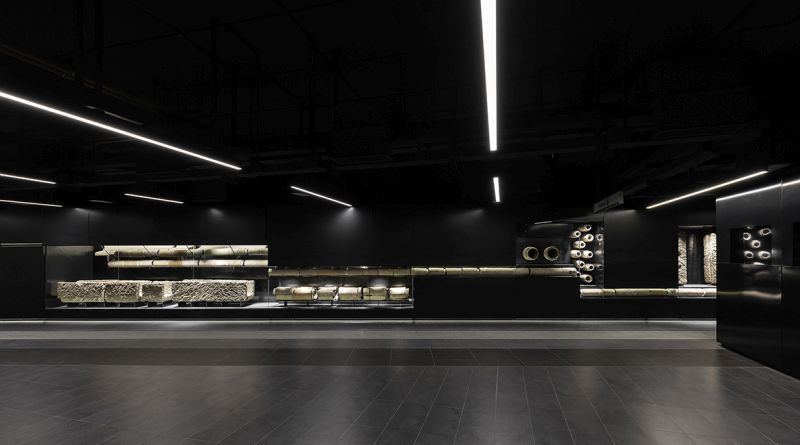
Fig.
11 - Author & C. Rome Metro, Line C, San Giovanni Station.
Crowd of passengers and onlookers; daily life of the heritage.
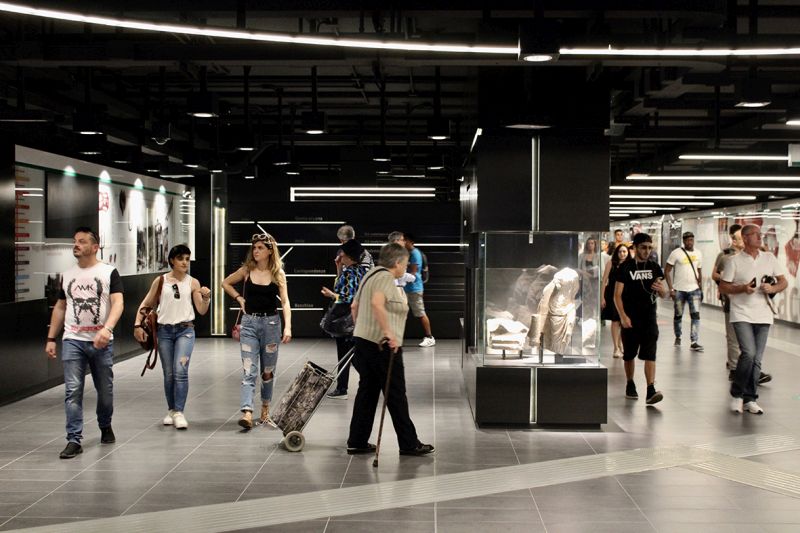
Fig.
12 - Author & C. Rome Metro, Line C, San Giovanni Station.
An unexpected encounter with archeology.
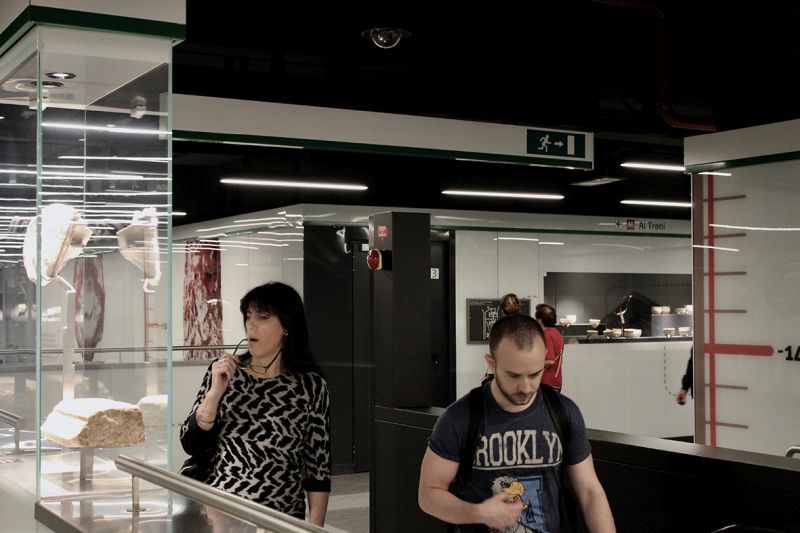
Fig.
13 - Author & C. Rome Metro, Line C, San Giovanni Station.
A degree of attention and interest for each of the passengers.
